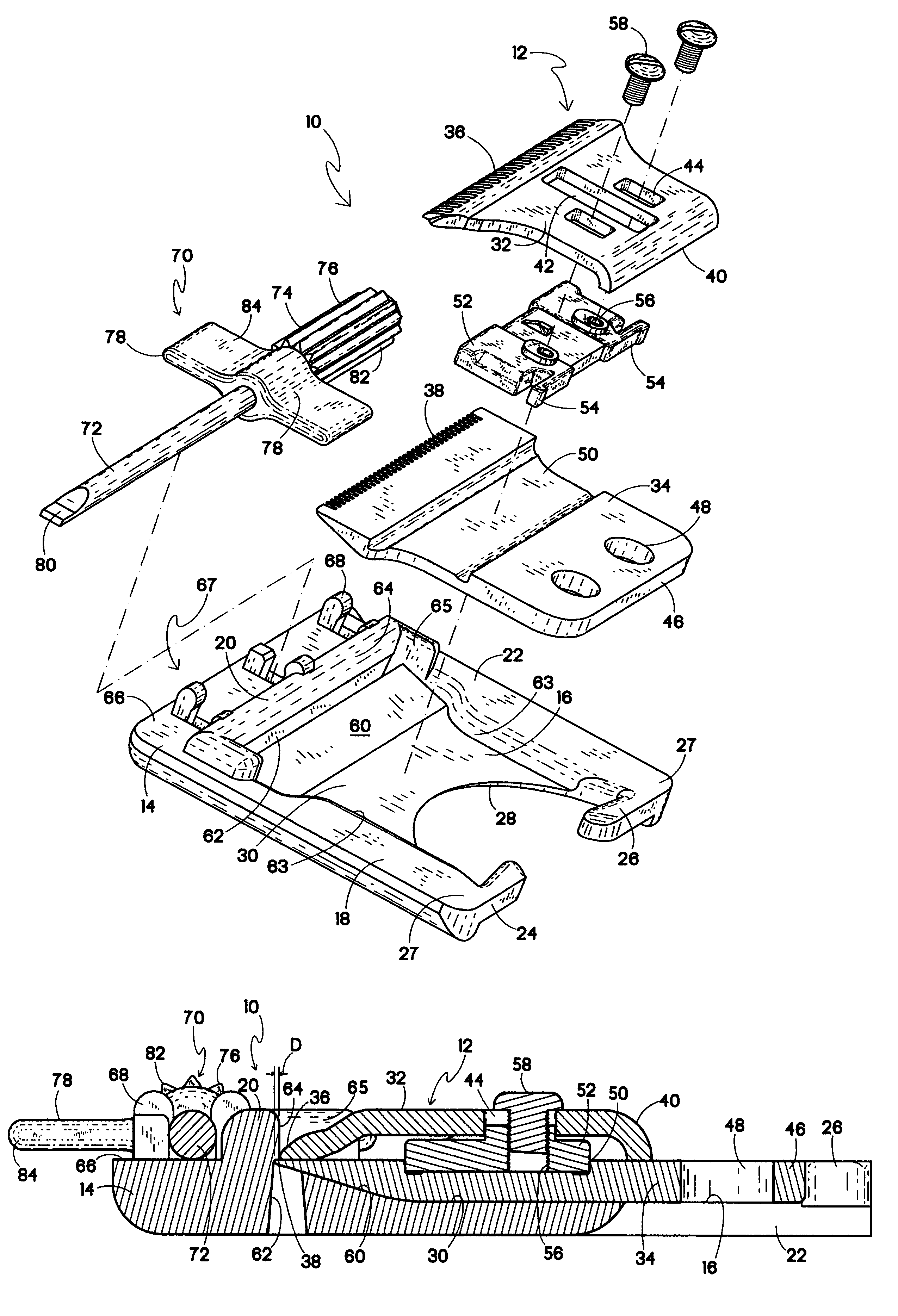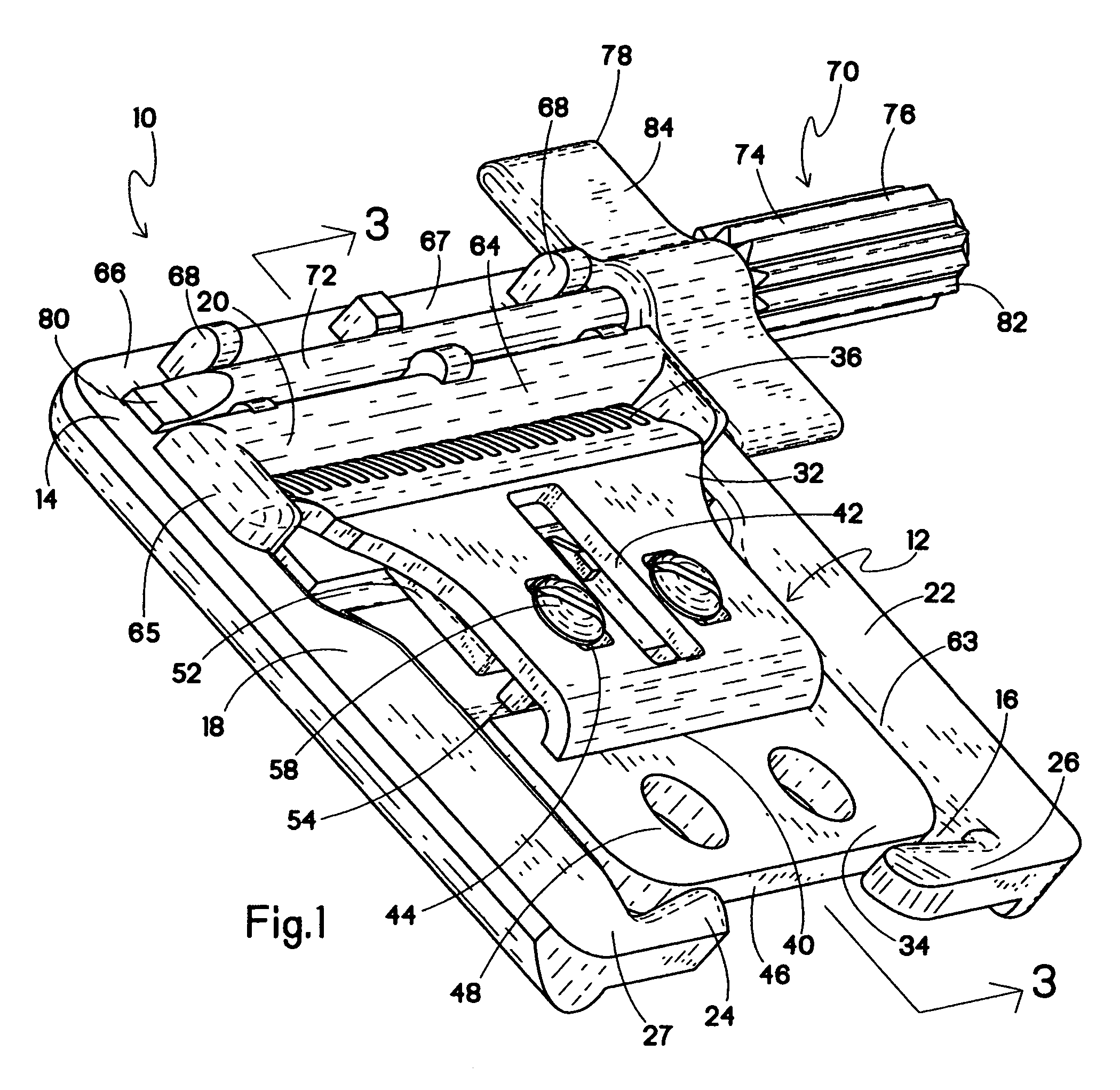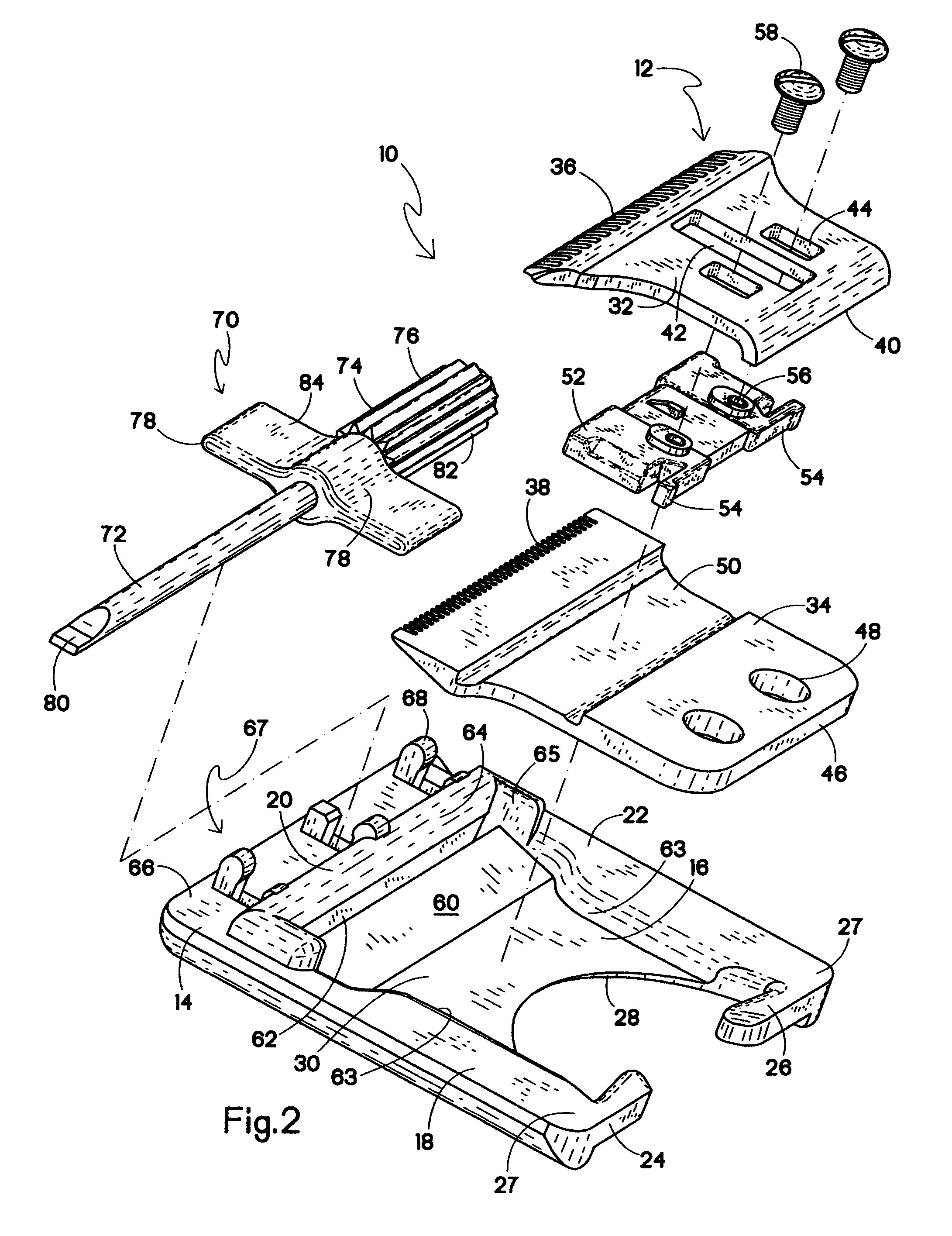Calibration gauge for hair cutter bladesets
a bladeset and calibration gauge technology, applied in the direction of drilling/boring measurement devices, manufacturing tools, instruments, etc., can solve the problems of end users, difficult to accurately adjust the bladeset spacing, and difficulty in recalibration, so as to achieve more accurate cutting, small gap, and more precision
- Summary
- Abstract
- Description
- Claims
- Application Information
AI Technical Summary
Benefits of technology
Problems solved by technology
Method used
Image
Examples
Embodiment Construction
[0015]Referring to FIGS. 1 and 2, the present blade calibration gauge, generally designated 10 is shown holding a bladeset 12. The bladeset 12 is received by a base 14 in a recess 16 of the blade calibration gauge 10. The recess 16 is defined by a first side portion 18, a top section 20, and a second side portion 22. When viewed from above, the first and second side portions 18, 22 are in generally spaced parallel relationship to each other, and when combined with the top section 20, from a general “U”-shape. Alternate shapes for the recess 16 and the components defining the recess are contemplated as long as the bladeset 12 is securely retained.
[0016]Projections 24 and 26 are secured to free ends 27 of the first and second side portions 18, 22 and project normally from the side portions to close off a rear end of the recess 16. Also, the projections 24 and 26 are configured to assert a spring force against a stationary blade against a designated stop, and also to snugly retaining t...
PUM
 Login to View More
Login to View More Abstract
Description
Claims
Application Information
 Login to View More
Login to View More - R&D
- Intellectual Property
- Life Sciences
- Materials
- Tech Scout
- Unparalleled Data Quality
- Higher Quality Content
- 60% Fewer Hallucinations
Browse by: Latest US Patents, China's latest patents, Technical Efficacy Thesaurus, Application Domain, Technology Topic, Popular Technical Reports.
© 2025 PatSnap. All rights reserved.Legal|Privacy policy|Modern Slavery Act Transparency Statement|Sitemap|About US| Contact US: help@patsnap.com



